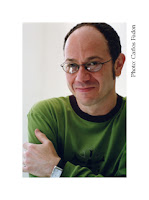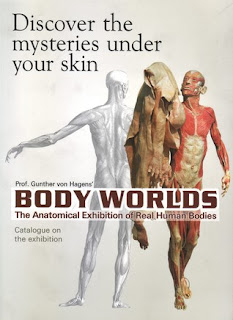Week 6: BioTech + Art
Just before
the start of the 21st century, a new type of art utilized genetic
engineering to create unique, aesthetically intriguing organisms. Known as
BioArt today, these art projects were pioneered by Joe Davis, and shortly
after, Eduardo Kac. Joe Davis was both an artist and a researcher at MIT’s Center
for Advanced Visual Studies. Although a rather eccentric human being, he set
many precedents for future BioArtists. He realized that genes and genomes could
become a new palette, with which artists can use life itself as a valid
expressive medium. He theorized many projects, such as the modifying amino
acids to form highly geometric capsules, but many molecular biologists were
still hesitant to teach him all of the necessary techniques. Shortly after,
Eduardo Kac invented the “GFP Bunny” in 2000, an iconic piece of BioArt (which
he called transgenic art at the time). In short, he injected the Green
Fluorescent Protein (GFP) into fertilized albino rabbit cells and grew a
fluorescent bunny (Vesna, 2013).
(Eduardo Kac (left), and the "GFP Bunny" project (right), which is an iconic BioArt piece)
Many scientists and citizens reject this concept of transferring genes into living beings for the sake of non-utilitarian projects. Instead, most people believe that genetic engineering and transgenics should be reserved for scientific purposes, such as studying cancers by tagging certain molecules with the fluorescent genes. Eduardo counteracted this opposition by encouraging open dialogue between biologists, artists, and the public. SymbioticA, founded in 2000 by cell biologists of the University of Western Australia, is an evolving artistic laboratory that supports any artists interested in the life sciences. Using tissue cells as an artistic media raises ethical standards, but it also produces discussions regarding standards for biotechnology in general. For example, the “Victimless Leather” project at SymbioticA reveals society’s exploitation of animals to make garments. This art piece cleverly brings a new perspective on the relationships between humans and the animals used for clothing, which itself often marks one’s social status or identity.
(Symbotica's Tissue Culture and Art Project uses biotechnology in art pieces such as Victimless Leather, shown on the right)
In my opinion, artistic media and
standards should continue to grow with the continuous evolution of scientific
technology. Ethical debates will certainly arise regarding the purposes of
BioArt. I think genetic engineering can be used as an expressive medium, as
long as artists use their projects to create more dialogue and respect between
artists, scientists, and the public. Perhaps artists should be subject to more
restrictions for their own safety, but the science community will definitely
benefit from a new perspective on biotechnology. Ultimately, if ethical
frameworks continue to change for technology and engineering, then there should
not be any limits to artistic creativity.
References:
Vesna,
Victoria. 5 bioart pt 1 1280x720. Online video clip. YouTube. YouTube, 18 Sept 2013.
Web. 13 May 2017.
Vesna,
Victoria. 5 BioArt pt2. Online video clip. YouTube. YouTube, 18 Sept 2013.
Web. 13 May 2017.
Kac, Eduardo. "GFP BUNNY." KAC. N.p., n.d. Web. 13 May 2017.
"About us." SymbioticA: The University of Western Australia. N.p., 13 Jan. 2017. Web. 14 May 2017.
"Victimless Leather- A Prototype of Stitch-less
Jacket grown in a Technoscientific "Body"." The Tissue Culture and Art
Project. N.p., n.d. Web. 13 May 2017.
Image Sources:
Kac, Eduardo. "EDUARDO KAC -- BIOGRAPHICAL NOTE
." KAC. N.p., n.d. Digital Image. Web. 13 May 2017.
Kac, Eduardo. "GFP BUNNY." KAC. N.p., n.d. Digital Image. Web. 13 May 2017.
"About us." SymbioticA: The University of
Western Australia. N.p., n.d. Digital Image. Web. 13 May 2017.
"Victimless Leather- A Prototype of Stitch-less
Jacket grown in a Technoscientific "Body"." The Tissue Culture and Art
Project. N.p., n.d. Digital Image. Web. 13 May 2017.






Comments
Post a Comment